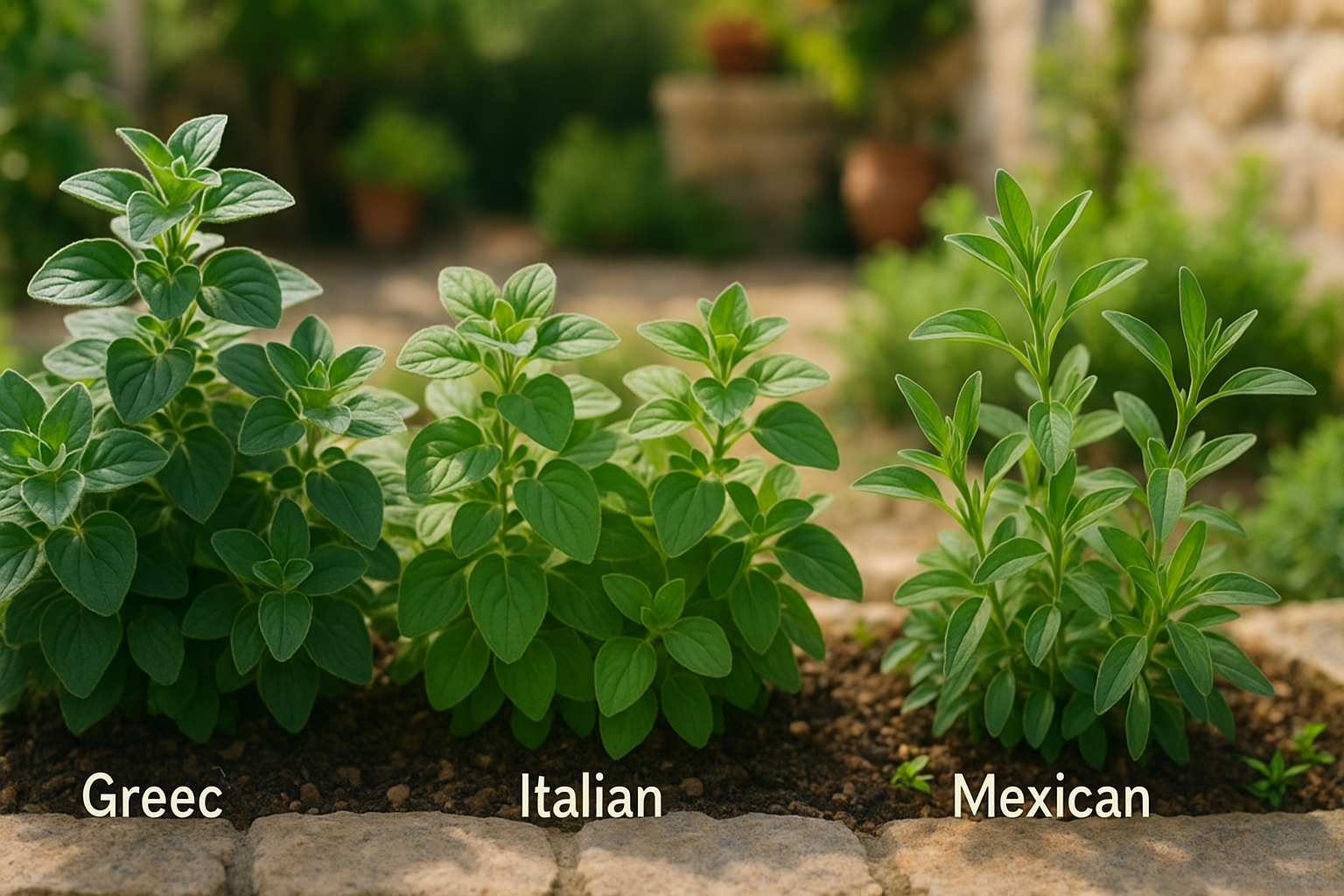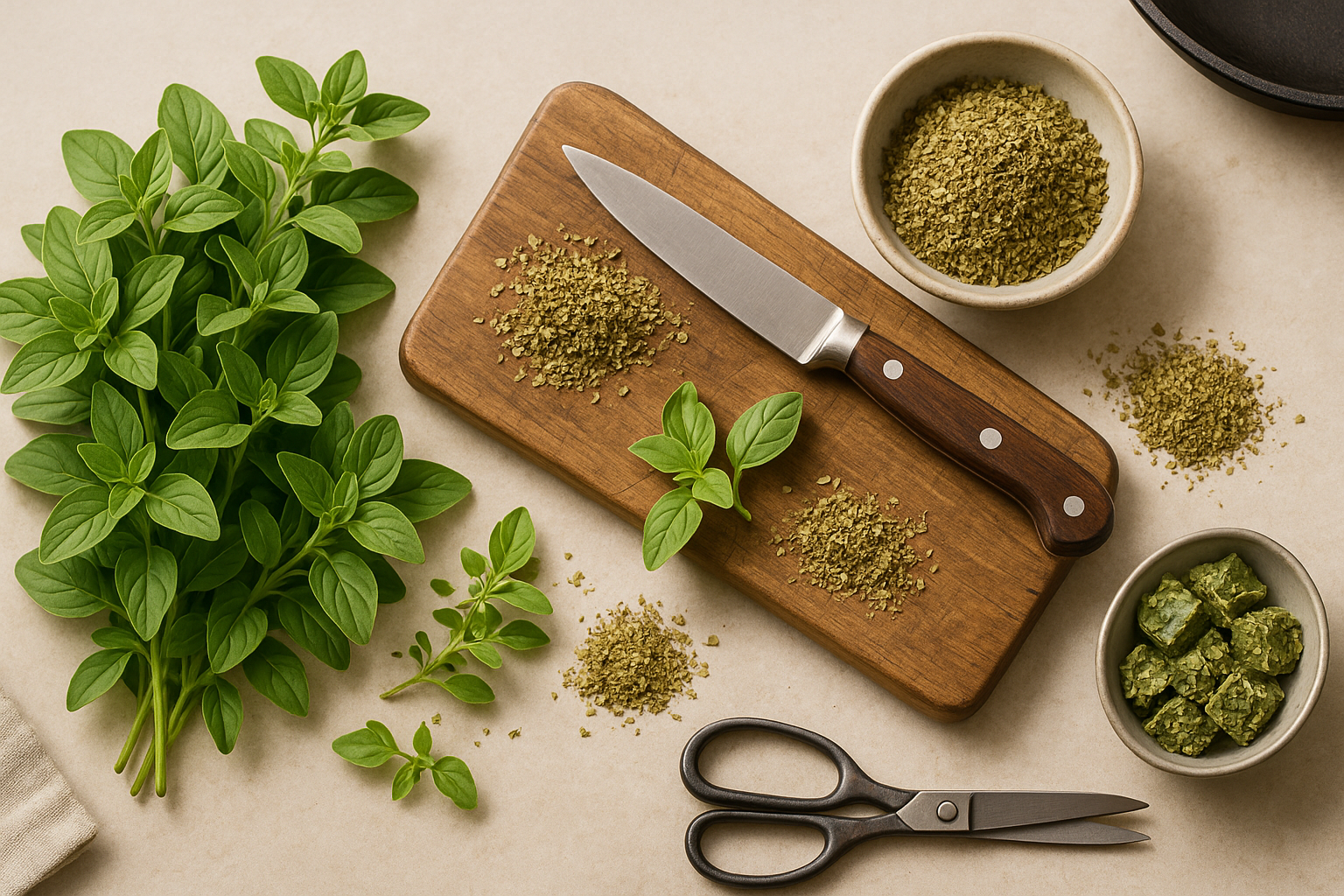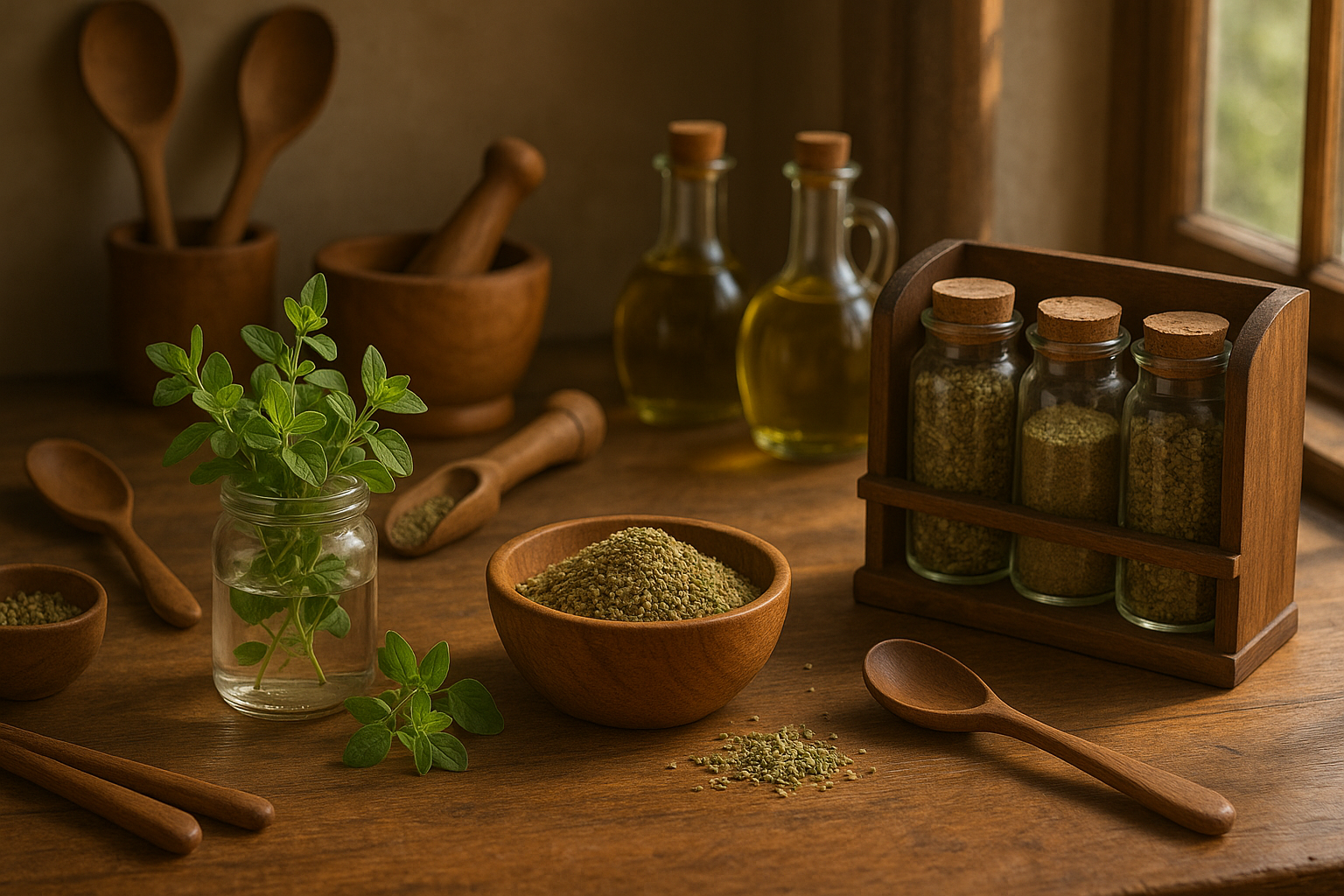Introduction
Cooking with oregano is a time-honored tradition in kitchens around the world, from classic Italian tomato sauces to vibrant Greek salads and even tangy Mexican salsas. But did you know that cooking with oregano can be a completely different experience depending on whether you use it fresh or dried?
Oregano is beloved for its punchy, aromatic flavor—but its form plays a big role in how it impacts your dish. Fresh oregano, with its soft, leafy texture and slightly milder, grassy undertones, shines when sprinkled atop pizzas or folded into pasta salads at the last minute. Dried oregano, on the other hand, packs a more concentrated, robust flavor that stands up well to long simmering and roasting, making it a staple in spice racks everywhere.
Understanding the distinct differences between fresh and dried oregano isn’t just for culinary purists; it can help you choose the right form for your recipes and even unlock new health benefits along the way. In this post, we’ll break down the unique flavors of oregano, when and how to use each version, the health perks they offer, and expert cooking tips to help you elevate any dish. Whether you’re an oregano novice or seasoned pro, these insights will add extra zest to your home cooking.
Oregano 101

Oregano is a fragrant perennial herb from the mint family (Lamiaceae), originally native to the Mediterranean region but now found worldwide. Its botanical name, Origanum vulgare, reflects its widespread use, but not all oreganos are created equal.
Greek oregano (Origanum vulgare subsp. hirtum) stands out as the boldest and most widely used in Mediterranean and Greek cuisine. It’s known for its robust, spicy flavor and slightly bitter undertone—perfect for classic dishes like Greek salad and souvlaki.
Italian oregano, often a blend of oregano and marjoram, is milder and sweeter, making it ideal for pasta sauces, pizza, and tomato-based recipes.
Mexican oregano (Lippia graveolens), from a completely different botanical family, packs a punchier, citrusy profile with hints of licorice, suiting it perfectly to chili and taco seasoning.
Each variety brings something unique to the kitchen, and choosing the right one can elevate your meal. For example:
- Use Greek oregano when you want boldness.
- Choose Italian oregano for a more subtle flavor.
- Opt for Mexican oregano when cooking Latin American dishes.
Experimenting with these types in your spice rack can reveal new layers of taste and lead to more authentic, flavorful results in your favorite recipes.
Fresh vs Dried Oregano

When it comes to oregano, both fresh and dried forms have their unique charms, but they bring distinctly different experiences to your cooking. Fresh oregano offers a bright, grassy flavor with a touch of peppery bite and a lemony undertone—perfect for finishing Mediterranean salads, pizza, or grilled vegetables just before serving. Its aroma is vibrant and herbaceous, filling your kitchen with a lively, garden-fresh scent.
In contrast, dried oregano packs a much more concentrated punch. The drying process intensifies its natural oils and transforms the taste, lending a robust, earthy depth with slightly bitter, savorier notes. That’s why dried oregano holds its own in slow-cooked dishes like tomato sauce, stews, or braises, where the flavors meld over time and can stand up to longer simmering.
As for appearance, fresh oregano leaves are soft, tender, and bright green, adding a splash of color and a pleasant leafy texture to dishes. Dried oregano, on the other hand, is pale green to brown, with a crumbled, almost dusty texture—so a little goes a long way.
If a recipe calls for one but you only have the other, keep in mind the flavor difference: typically, one teaspoon of dried oregano equals one tablespoon of fresh. Use fresh oregano when you want subtlety and visual appeal, and dried when you need bold flavor to cut through heartier or richer foods. Whether you’re whipping up a quick vinaigrette or slow-cooking a Sunday sauce, choosing the right form of oregano can elevate both taste and presentation in your favorite recipes.
When to Use Fresh vs Dried Oregano in Cooking
Knowing when to use fresh versus dried oregano can elevate your cooking and make a real difference in flavor. Fresh oregano is vibrant and aromatic, with a hint of minty, peppery notes that really shine in dishes where it isn’t overpowered by heat—think salad dressings, marinades, or as a bright garnish on roasted vegetables and grilled meats.
Greek salads, tomato salads, and lemony vinaigrettes are prime examples where fresh oregano can bring a burst of fresh flavor.
Dried oregano, on the other hand, is more concentrated, earthy, and slightly bitter, making it a staple in cooked dishes where its flavor can infuse over time. It’s your go-to for classic Italian pizzas, tomato sauces, braised meats, and hearty stews.
Pizza Margherita, spaghetti sauce, and slow-cooked chili all benefit from the savory depth that dried oregano provides.
Substitution Tips
When substituting, remember that dried oregano is about three times as potent as fresh, so use one teaspoon of dried oregano for every tablespoon of fresh. For example:
- If a recipe calls for one tablespoon of fresh oregano and you only have dried, use one teaspoon instead.
- Conversely, if replacing dried with fresh, triple the amount.
Cooking Tips
For best results, add fresh oregano near the end of cooking to keep its flavor lively, while dried oregano should go in earlier so it has time to release its full aroma.
Keep in mind that dried oregano is more shelf-stable and convenient for pantry storage, but if you have access to fresh, don’t hesitate to use it where its brightness will truly shine. These simple guidelines help you get the most out of oregano, whether you’re tossing a quick salad or simmering a rich sauce.
Culinary Tips for Getting the Best Out of Oregano
To get the best out of oregano, timing and technique really matter. Fresh oregano is bold and peppery—perfect for adding at the end of cooking or as a garnish to preserve its vibrant flavor. Simply pluck the leaves from the woody stems and chop them with a sharp knife, or use whole small sprigs in stews and remove them before serving.
For dried oregano, which has a more concentrated taste, sprinkle it in early—especially when simmering sauces or roasting vegetables—so it can rehydrate and unlock its full flavor. When prepping oregano, wash fresh sprigs and pat them dry gently; then stack the leaves and slice them into ribbons or mince finely.
To store fresh oregano, wrap unwashed sprigs loosely in a damp paper towel and tuck them into a plastic bag in the fridge, where they’ll keep for up to a week. If you have more oregano than you can use, drying is simple:
- Rinse the sprigs.
- Tie them into small bundles.
- Hang upside down in a warm, airy space out of direct sunlight until crisp (about a week).
- Crumble the dried leaves into an airtight container, away from heat and light.
Dried oregano lasts up to six months—just give it a gentle crush between your fingers before using to revive its aroma. With these tips, oregano can brighten your dishes and last in your kitchen all year round.
Oregano in Healthy Cooking
Oregano is more than just a fragrant herb topping for your pizza; it’s packed with antioxidants, vitamins, and minerals that support overall health. Regular consumption of oregano may help boost your immune system and reduce inflammation, thanks to potent compounds like carvacrol and thymol, known for their antibacterial and antifungal properties.
It’s also a rich source of vitamin K, which plays a key role in bone health, along with small amounts of calcium and iron. When comparing fresh to dried oregano, you’ll find that dried oregano has a more concentrated flavor and higher levels of certain antioxidants because the drying process intensifies its compounds; however, fresh oregano offers more vitamin C.
Bringing this healthful herb into your daily meals is easy and delicious. Try sprinkling dried oregano into homemade salad dressings or marinades for grilled chicken and vegetables. You can also add fresh oregano leaves to tomato-based sauces, omelets, or roasted potatoes for a vibrant, herby flavor.
For a quick, nutritious upgrade, toss a pinch of oregano onto popcorn or avocado toast. These simple uses help you enjoy oregano’s health benefits while brightening up your meals with a burst of Mediterranean taste.
Inspiring Recipe Ideas with Fresh and Dried Oregano
Oregano is a culinary powerhouse that brings vibrant, earthy flavor to countless dishes, whether you use it fresh or dried. For a taste of the Mediterranean, try adding fresh oregano leaves to a classic Greek salad—it pairs beautifully with tangy feta and juicy tomatoes.
In Italian cuisine, dried oregano is a staple in homemade pizza sauces and marinara, infusing each bite with its robust aroma. Don’t be afraid to mix the two: combine fresh oregano in a lemony chicken marinade for a burst of brightness, while sprinkling dried oregano on roasted potatoes or vegetables for depth and warmth.
If you’re feeling adventurous, explore Middle Eastern cooking by stirring dried oregano into za’atar seasoning for flatbreads, or toss both forms into a hearty lentil soup to layer flavors. Oregano also shines in creative recipes like herbed compound butter—blend chopped fresh leaves and a pinch of dried oregano into softened butter to elevate warm bread.
If you grow your own, use a handful of fresh sprigs to infuse olive oil, creating a fragrant drizzle for grilled meats or salads. For an easy pasta night, sauté garlic in olive oil, add a teaspoon of dried oregano, then finish with a handful of fresh leaves and a sprinkle of parmesan.
Whether you stick to traditional favorites or experiment across cuisines, blending fresh and dried oregano lets you unlock unique flavor depths and keeps everyday meals exciting.
